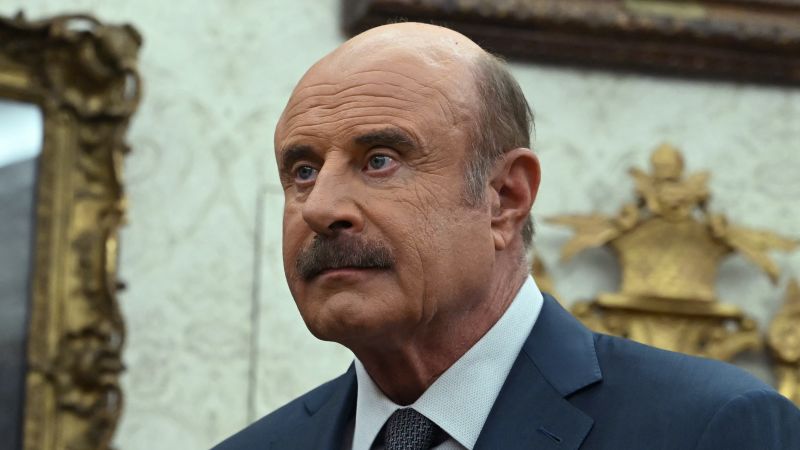In a move that has stirred significant controversy, federal agents prepared to launch an extensive immigration crackdown in Los Angeles. Among those present at the scene was Dr. Phil McGraw, a television personality known for his daytime talk shows. This event marked yet another instance where McGraw found himself embedded with US Immigration and Customs Enforcement (ICE), further highlighting the intertwining of entertainment and governmental operations in the realm of immigration enforcement.
The activities in Los Angeles on Friday unfolded with McGraw and his crew, who were capturing footage for a segment on “Dr. Phil Primetime.” This special report is set to air on McGraw’s conservative broadcasting platform, Merit TV. The involvement of a well-known media figure on the ground underscores the performative aspect of the immigration crackdown initiatives spearheaded during the Trump administration. Such actions have raised questions about the motivations behind these operations—whether they are truly enforcing laws or are more concerned with creating dramatic television content.
Earlier this year, Dr. Phil had participated in similar activities with ICE in Chicago as part of an orchestrated display of federal authority right at the beginning of President Trump’s second term. On this latest occasion, McGraw was ostensibly there to gain firsthand insight into targeted immigration operations, which included conversations with key Trump administration officials such as Tom Homan, the “border czar.” These interactions involved promotional interviews that have added a layer of media sensationalism to the already tense atmosphere surrounding immigration enforcement.
The immigration raids conducted on the same day led to the detention of numerous individuals, provoking protests and violent responses across the city. In light of the chaos caused by the crackdown, President Trump authorized the deployment of the National Guard to maintain order and control, a clear sign of escalating tensions between immigration enforcement officers and community activists. Government officials have consistently sought to maximize visibility around immigration raids, utilizing platforms like Fox News and social media sites such as X (formerly Twitter) to spread their narrative and justify such measures to the public.
In context of emerging protests in Los Angeles, Trump officials used social media as a means of asserting not only the validity of the National Guard’s deployment but also to issue stern warnings to residents against hindering immigration operations. A notable statement from FBI Deputy Director Dan Bongino reflected a stance of determination and resolve, indicating that federal agencies would not be deterred by public dissent or unrest.
President Trump has taken to his own social media platform, Truth Social, to shape the narrative around the immigration situation in Los Angeles. His posts have often carried sensational implications, likening the crisis in the city to a fictionalized invasion. He expressed his viewpoint that Los Angeles has been “invaded and occupied by Illegal Aliens and Criminals,” which drew sharp criticism from local residents who believed such claims exaggerated the severity of the issues at hand. Trump’s comments fueled public discourse, with assurances that order would be restored and illegal immigrants would be expelled.
As the situation unfolded, demonstrations continued as Los Angeles police made efforts to disperse the crowds. Simultaneously, Trump was reportedly online, observing news coverage and commenting about the events. His remarks emphasized a tone of urgency, including calls to “BRING IN THE TROOPS!!!” All these communications contribute to a broader media narrative being constructed around the immigration crackdown—a narrative that marries elements of television spectacle with real-life governmental actions and societal consequences.
In conclusion, the marriage of media presence with federal immigration enforcement has not only amplified the tension surrounding these raids but also showcased how entertainment figures can influence and highlight political and social issues. Dr. Phil’s embedding with ICE during these operations reflects a complex interaction between civil governance and public storytelling, heightening the scrutiny on governmental practices and the narratives that emerge from them.



